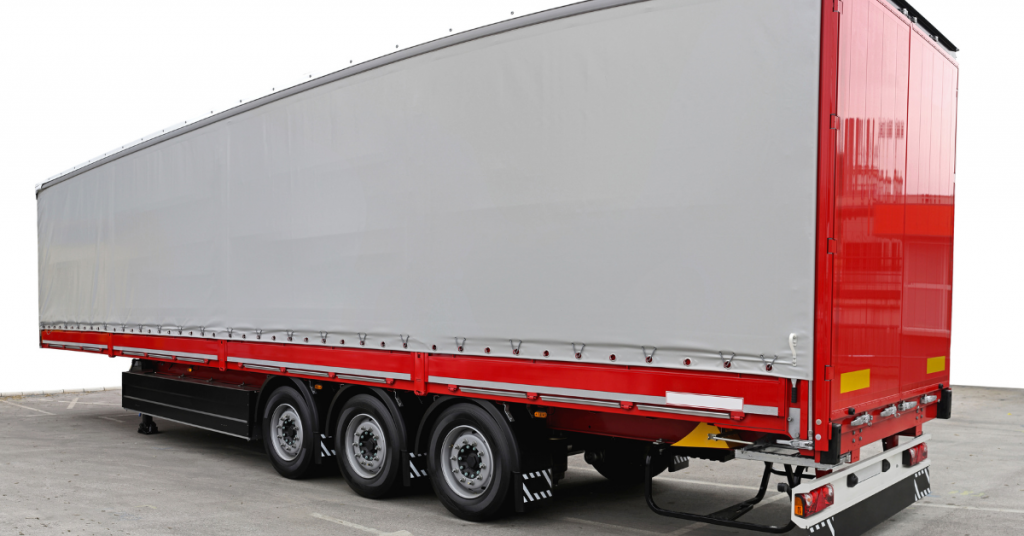Being the largest vehicle on the roads, semi-trucks are lengthy, bulky, and look so magnanimous with large tractors trailing behind them. And on their own, just the semi-trucks are large enough than most other carrier vehicles.
Now, there might be several reasons why you need to know how long a semi-truck is. It could be for the sake of parking arrangements or certain rules by the State Government.
Hence, knowing the length of a semi-truck is important if you own one or if you are the operator who needs the information for the sake of maneuvering in steep edges.
So, in this piece, we will talk about the length of a semi-truck with a trailer and the length of a semi-truck without a trailer.
How Long is a Semi Truck Without Trailer?
A semi-truck without a trailer, on average, is 25 feet to 30 feet long. However, we consider this length measuring the semi-truck from the bumper to the end of the rear wheels/end rails, i.e., an extended part of the semi-truck, excluding the body.
To be more specific, if you calculate the length from the bumper to back of cab, or BBC, the average length falls somewhere between 15 to 20 feet, i.e., only the cab.
With a sleeper cab inside and space for additional features, there is a slight variation in this length.
And depending on the model, manufacturer, and if they have a sleeper cab inside, the length falls within the above-mentioned range.
How Long is a Semi Truck and Trailer?
The average length of the semi-trucks from the front bumper to the end of the trailer is 72 feet. It is the complete length, the semi-truck body, plus the trailer.
The trailers lack front wheels, they can only move and be controlled when attached to the truck. So when attached to the semi-truck, a little more than 15 feet falls on the extended portion of the semi-truck, i.e., the rail end.
Thus, when the length of the semi-truck is calculated in its entirety, the average length of the semi-truck with a trailer is 72 feet. The length of the trailers also generally varies between 48 and 53 feet.
Different Semi Truck Trailers Lengths

The typical length of a semi-truck trailer varies from region to region.
However, the length may vary depending on the types of trailers attached. So here are the major types below.
1. Single Trailers
Some single trailers pulled behind by a semi-truck are required to be 48 feet long by Federal law in some countries.
Although when you tow two trailers simultaneously, there might be a little change.
2. Double Trailers
The trailers that fall into this category are usually longer than 65 feet in total. They would only be a maximum of 28.5 feet long each.
3. Triple Trailers
For a long time, three trailers can be pulled in tandem behind a semi-truck in several.
States, and this is far more effective and cuts shipping costs by 20%. They are more than 80 feet long.
How Is Semi Truck Trailer Length Measured?

The entire length of any trailer may usually be determined quite easily. However, since the majority of them are 48 feet long, you’ll need a fairly long measuring tape.
The outer wall is used for measurement. At the opposite end of the trailer, the measurement continues to the exterior wall.
8 Types of Trailers Pulled by Semi Trucks And Their Lengths
Trailers are attached to a semi-truck for the transportation and distribution of diverse items across or within the country.
There are different kinds of trailers for semi trucks, depending on your load or freight.
1. The Flatbed Trailer (48 to 53 feet)

The term “flatbed trailer” refers to a flat deck that is usually open on all sides without a roof or box to protect the load.
The open design of the trailer makes it simple to load and unload, but it offers little protection for the goods from the weather or traffic.
Because the load may be lowered from the top of a crane or raised from another part using a forklift, flatbed trailers are ideal for transporting wide or huge products.
2. Step Deck Or Drop Deck Trailer (48 to 53 feet)
The step deck trailers are similar to flatbed trailers, and they are commonly referred to as drop deck trailers.
Step deck trailers feature two deck levels, known as the upper or top deck and lower deck, whereas flatbed trailers only have one level.
The upper deck, which is located above the tractor unit, is between 10 and 13 feet long.
The bottom deck is only three feet and three inches above the ground and is approximately 38 and 40 feet long.
Step deck trailers can tow taller loads as a result of their lowered deck.
3. Lowboys Trailers (24 to 29.6 feet)

Due to the two decreases in deck height that enable a very low deck, lowboy trailers are also known as twin drop trailers.
After the gooseneck comes to the first drop and before the wheels come to the second drop.
Lowboy trailers are the best choice for transporting higher equipment without a height permit due to their descending feature.
4. Reefer Trailers (48 to 53 feet)
These trailers, which feature insulation and temperature controls, are also referred to as refrigerated trailers.
These trailers use refrigeration to make perishable, chilled, or frozen items transportable, but they can also safeguard temperature-sensitive goods.
5. Dump Trailers (8 to 20 feet)

The bed of a dump trailer is raised and tilted using hydraulics to make it easier to unload heavy loads and also to dump their load.
Dump trailers let you adjust the trailer size to fit your load, even though they are frequently confused with dump trucks.
6. Dry-Van Trailers (mostly 53 feet)
Non-perishable commodities are transported in fully enclosed, weather-and road-protected dry van trailers, commonly referred to as enclosed or box trailers.
7. Tanker Trailers (42 to 45 feet)

Liquid and gas are transported in tanker trucks, which are made of stainless steel or aluminum.
Tanker trailers are designed in cylinder shapes to relieve pressure on the tank itself, reduce the center of gravity, stop liquid surges, and make extraction easier.
8. Tipper Trailers (About 13 feet)
Tipper trailers perform the action implied by their name; they tip to allow gravity to empty the load.
These trailers rise and tilt their platforms using hydraulics.
Bricks, rocks, gravel, and other heavy materials are easy to transport and dump with tipper trucks.
Why You Need To Know About The Dimensions Of A Semi Truck With Or Without A Trailer

Knowing the length of your Semi trucks – with or without a trailer – matters in transportation, both for the equipment being transported and the trailer that is conveying it.
The ideal sort of trailer for safe transport is chosen based on the item’s dimensions, shape, and weight.
There are many different types of trailers, and each has a unique set of measurements.
Determining what a semi-truck can and cannot move is made easier by knowing its dimensions.
It is easier to guarantee that the equipment is transported appropriately if you are aware of the semi-trailer’s dimensions and maximum weight.
On the Legal part…
Every company that uses semi trucks and trailers is expected to register with the U.S. Department of Transportation (USDOT).
After registration, they are to abide by rules pertaining to safety, carrier and employer obligations, driver fitness, and financial liability requirements.
There are rules guiding the length of semi trucks with or without trailers.
Hence, knowing how long your semi truck is with or without a trailer is important to avoid an unnecessary fine.
FAQs
Here are some interesting facts and queries to enlighten you about semi-trucks.
Q. Does the Length of a Semi Truck With or Without a Trailer Affect its Speed?
The length of a semi-truck can affect its speed, but for safety measures, the majority of states have their speed limit, which can range from 55 mph to 80 mph. A lot of trucking businesses don't let their truck drivers go over 65mph. This is because semi-truck trailers can require 20% to 40% more stopping distance than cars, or roughly two football fields, to stop. Since how long a semi-truck is with or without a trailer affects its weight, then, this article will be incomplete without talking about the weight of a semi-truck.
Q. How Much Does a Semi Truck Without a Trailer Weigh?
Depending on size, a semi-truck without a trailer weighs between 10,000 and 25,000 pounds. Semi-trucks fall under the category of commercial vehicles. This is because any truck that weighs more than 10,000 pounds is considered a commercial vehicle. Additional Info: The maximum weight that semi trucks can transport is indicated by their gross vehicle weight rating (GVWR).
Q. How Much Does a Semi Truck With a Trailer Weigh?
Typically, a semi-truck with a trailer weighs around 35000 pounds without load. And when fully loaded, it can weigh around 80000 pounds.
Q. How Many Wheels are there on Semi Trucks With a Trailer?
Most semi trucks with a trailer, which are up to 70 feet long, have 18 wheels. However, semi trucks are capable of having fewer wheels, and if additional trailers are being transported, this will also increase the truck's wheel count.
Q. How Many Wheels are There on Semi Trucks Without a Trailer?
Because the length is shorter, there are 10 wheels on a semi-truck without a trailer. It consists of two front steering wheels on the tractor, dual wheels on each end of two axles (for a total of eight axles), and wheels supporting the front of the trailer.
Conclusion
Throughout this article, a lot of details have been covered as it relates to how long semi trucks are with or without trailers.
Additionally, because of the effect of the length on the weight, we discussed the weight of a semi-truck with or without trailers and certain laws guiding the maximum length and weight permitted.



